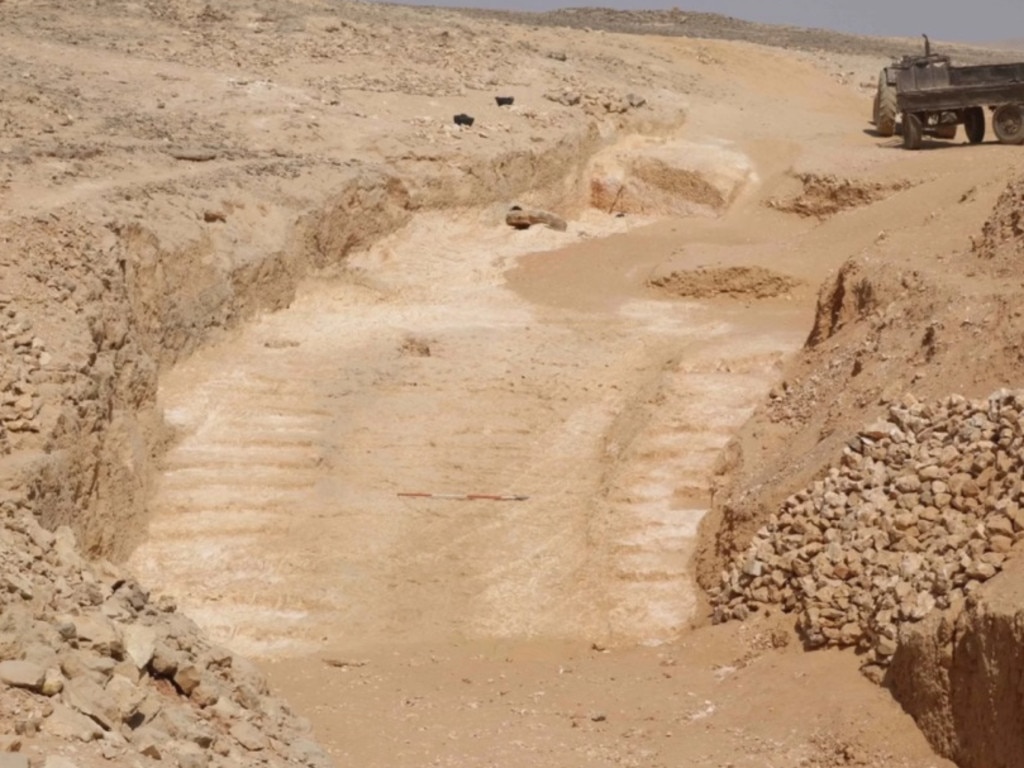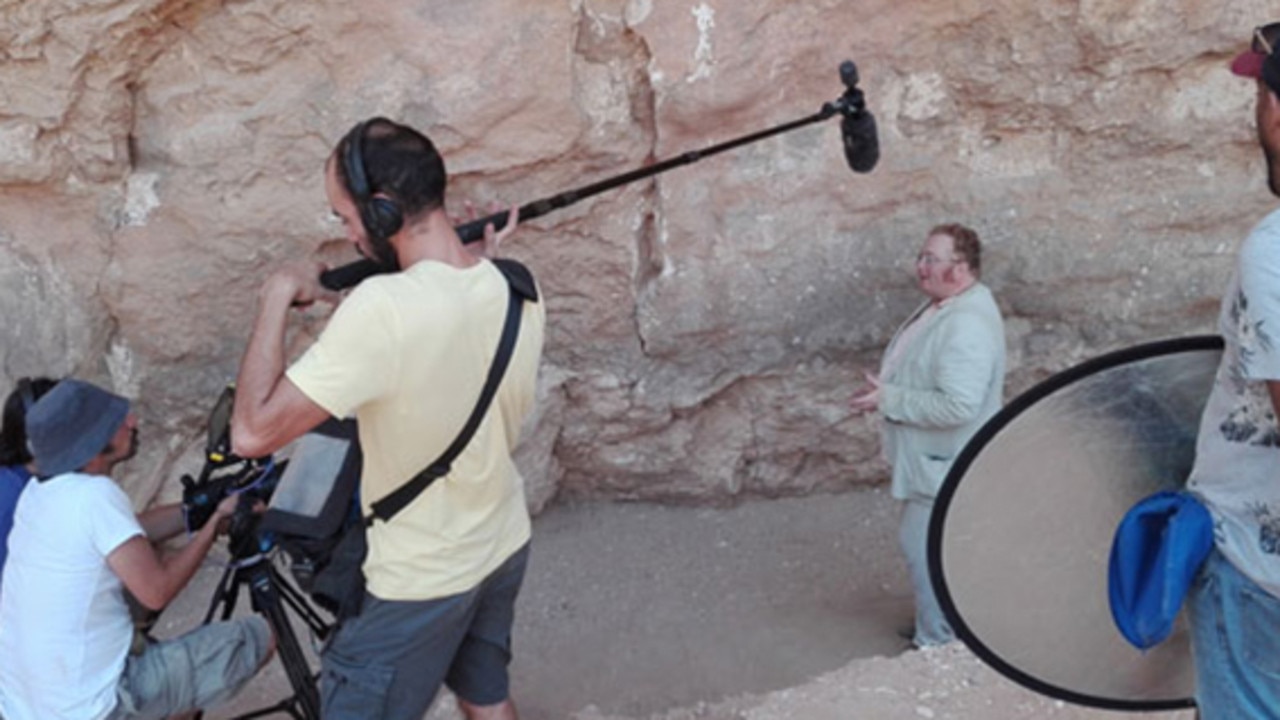Genius ancient building hack may solve mystery of how pyramids were built
A CLEVER construction technique designed more than four millennia ago has been unearthed — and it could solve a long-held mystery.
EGYPT’S mysterious pyramids have always baffled scientists — but an ancient construction hack may reveal how they were built.
Egyptologists have made a surprise discovery in an ancient quarry that suggests pyramid builders used a modified ramp to make hauling enormous rocks far easier.
The Great Pyramid of Giza is one of the ancient wonders of the world, and with good reason. The enormous structure was built around 4500 years ago, made from enormous granite stones supposedly cut by wooden wedges.
What confuses archaeologists is how ancient Egyptians managed to haul these stones up onto the pyramid’s structure — with the biggest stones weighing between 25 and 80 tonnes.
Now scientists believe that these millennia-old builders used specialised ramps with wooden posts in, allowing teams of men to haul rocks upwards using a pulley-style system.

With 2.3 million blocks making up the Great Pyramid, simply dragging rocks upwards from above required huge amounts of effort.
But scientists investigating inscriptions at the ancient Hatnab quarry accidentally unearthed a ramp with a 20 per cent incline.
It was previously believed to be impossible for Egyptians to have pulled heavy blocks up ramps at more than a 10 per cent incline — but this ramp was double the steepness.
The ramp had a surprising feature, however — post holes set alongside the steps on the side.
According to Roland Enmarch, from the University of Liverpool, these holes would have been filled with thick wooden posts.
Teams of builders would then have wrapped ropes around the posts to create pulleys, allowing blocks to be pulled upwards from below.
This, when combined with a team of men pulling upwards, made it possible to have a steeper, more compact ramp.

“The arrangement allows people to be spaced up and down the ramp, and all the force to be exerted in the same direction,” said Dr Enmarch, as quoted by The Times.
Yannis Gourdon, of the French Institute for Oriental Archaeology, said the stones lifted from the quarry would have been a similar size to those used in the Great Pyramid.
Part of the problem for scientists, however, is that the ramps used to build the Great Pyramid were removed after construction.
That means it’s impossible to know whether the exact same system was used at Giza.
But Dr Enmarch described it as a “plausible inference”.
He said: “This shows that at the time the Great Pyramid was being built, this technology was also being used.”

What makes the discovery even more exciting is that it was a complete accident.
Scientists were only there to record ancient subscriptions.
“When we were working on that, we did some cleaning,” Mr Gourdon said.
“We had to remove stones and debris against walls to find the inscriptions.”
During that process, they found a 3m-wide ramp with steps either side of it.
And the built-in holes were capable of being filled by posts measuring half a metre across.
“That means that when (Pharoah) Cheops made the pyramid in Giza they had the technology to transport huge stones on the huge steep slopes,” Mr Gourdon said.
Dr Enmarch agreed, saying the “double lashing system” was likely to have been used in Giza.
“They could pull both around the post and on the block-up and downwards,” he said.
“It doubles the number of people who can haul on the blocks.”
This article originally appeared on The Sun and was reproduced with permission.



